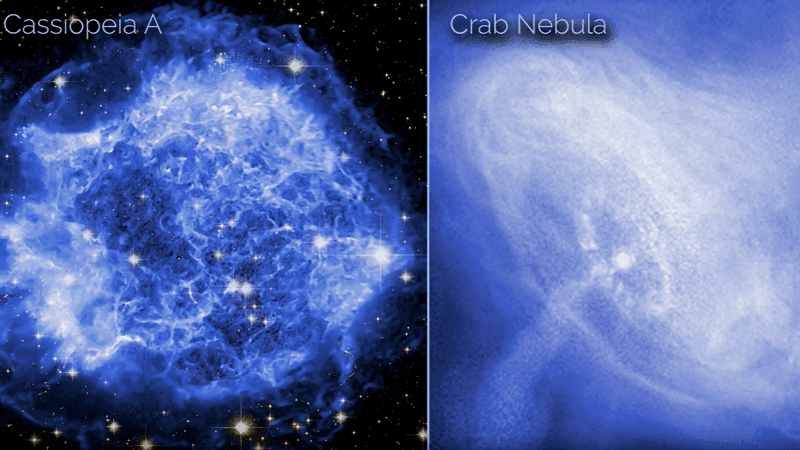Unveiling the Cosmic Drama: NASA's Breathtaking Time-Lapses of Supernovae
NASA Releases Gorgeous Time-Lapses Of Supernovae Showing 20 Years In 20 Seconds
Introduction: A Cosmic Symphony Unveiled
In a spectacular unveiling of the universe's grandeur, NASA has treated the world to a visual feast: time-lapse footage capturing the dazzling spectacle of supernovae. These cosmic explosions, marking the dramatic demise of massive stars, unfold over millennia, but through the lens of NASA's Hubble Space Telescope, two decades of cosmic evolution are condensed into just 20 seconds, offering a captivating narrative of celestial transformation.
Capturing the Cosmic Fireworks:
The time-lapse sequences, meticulously compiled from Hubble's observations, provide a rare glimpse into the dynamic life cycles of stars. Supernovae, among the most energetic events in the universe, occur when massive stars exhaust their nuclear fuel and collapse under their own gravity, unleashing titanic explosions that can outshine entire galaxies. By compressing two decades of observations into a mere 20 seconds, NASA showcases the unfolding drama of these cosmic fireworks, revealing the intricate interplay of light, matter, and energy on a cosmic scale.
A Cosmic Ballet in Motion:
As the time-lapse unfolds, viewers are treated to a mesmerizing display of stellar choreography. The remnants of supernovae, known as supernova remnants, expand into space at astonishing speeds, carving out intricate patterns in the interstellar medium. These evolving structures, sculpted by the forces of gravity, radiation, and magnetic fields, serve as cosmic canvases upon which the story of stellar evolution is writ large. Through Hubble's keen eye, we witness the ongoing transformation of the cosmos, from the fiery birth of stars to the majestic decay of stellar giants.
Peering Into the Heart of the Cosmos:
Beyond their aesthetic appeal, the time-lapse sequences captured by Hubble offer valuable scientific insights into the nature of supernovae and their role in shaping the universe. By analyzing the spectral signatures and spatial distributions of the gas and dust within supernova remnants, astronomers can probe the physics of stellar explosions and the mechanisms driving cosmic evolution. Such observations provide crucial data points for theoretical models of galactic dynamics, shedding light on the processes that govern the formation and evolution of galaxies over cosmic time.
Unraveling the Mysteries of Galactic Evolution:
Supernovae are not merely isolated events but integral components of the cosmic ecosystem, influencing the evolution of galaxies on a grand scale. These stellar explosions enrich the interstellar medium with heavy elements forged in the cores of dying stars, seeding future generations of stars and planets with the building blocks of life. By studying the remnants of supernovae, astronomers can trace the history of star formation within galaxies, unraveling the complex interplay between stellar birth and death that shapes the cosmic landscape.
Implications for Future Exploration:
NASA's release of these stunning time-lapse sequences serves not only to inspire wonder but also to highlight the importance of ongoing exploration and observation of the cosmos. As new technologies and telescopes come online, astronomers will have unprecedented opportunities to delve deeper into the mysteries of supernovae and their impact on galactic evolution. From unraveling the origins of cosmic phenomena to probing the nature of dark energy, each observation brings us closer to unlocking the secrets of the universe and our place within it.
Conclusion: A Window into Cosmic Majesty:
In the vast expanse of the cosmos, supernovae stand as cosmic beacons, illuminating the grand tapestry of cosmic evolution. Through NASA's release of stunning time-lapse footage, we are invited to witness the unfolding drama of the universe, from the fiery birth of stars to the majestic decay of stellar giants. As we gaze upon these cosmic spectacles, we are reminded of the boundless wonders that await exploration and the inexorable march of cosmic evolution that shapes the destiny of galaxies and the universe itself.
Disclaimer:
This summary is based on the news article "NASA Releases Gorgeous Time-Lapses Of Supernovae Showing 20 Years In 20 Seconds" from IFLScience. While efforts have been made to accurately represent the main points of the article, readers are encouraged to refer to the original source for complete details and context. The original news article can be accessed via the provided link: NASA Releases Gorgeous Time-Lapses Of Supernovae Showing 20 Years In 20 Seconds.




Comments
Post a Comment